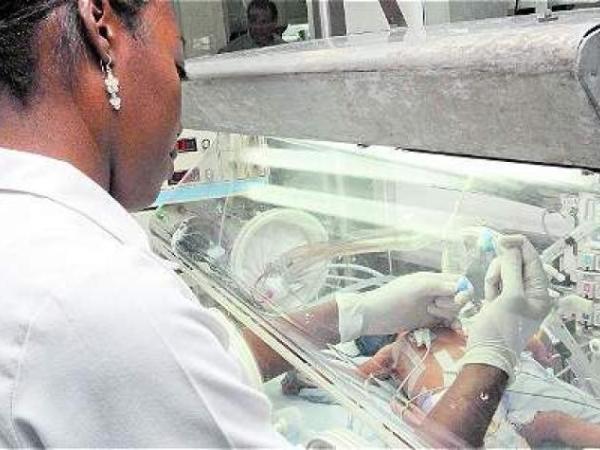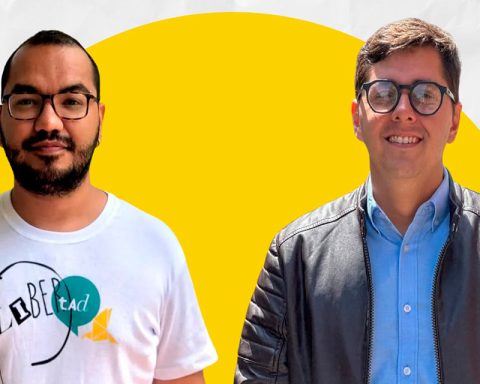Mauricio Barberi, General Director of the Mercy Pediatric Hospital Foundation (Homi)an entity with 125 years, spoke with Portafolio about the services offered, the programs for children and their plans.
What is the history of the Hospital?
Homi is the first pediatric hospital in the country, which has led in Colombia creating new services. We have more than 38 specialties for children, which has allowed us to have timely diagnoses and better survival rates in highly complex diseases such as cancer, neurology, orphan diseases, heart surgery, among others.
(Read: The three cases in which the use of the mask is still mandatory).
What advances have you had in 125 years of operation?
From the legacy of its founder José Ignacio Barberi, Homi has gone through four generations of directors, who have contributed advances to pediatrics, such as the creation together with the National University of the chair of children’s clinic, the Society of Bogota Pediatrics. In addition, we are leaders in pediatric oncology and neurology, we have the best rates of diagnosis and survival in highly complex diseases.
What is the care capacity of the hospital?
We currently have around 500 beds and 7 operating rooms with state-of-the-art technology. Additionally, we have the largest Childhood Cancer Center in Colombia.
In infrastructure, there are 26 pediatric intensive care beds, 11 neonatal intensive care beds, 7 operating rooms, 14 marrow transplant beds, and 12 neurodiagnostic beds. We serve 12,000 children per month, providing approximately 18,000 services according to the needs of each one.
How do you manage the association with the EPS?
In the market we have found EPS that have provided adequate management of resources, allowing access and treatment for children in a timely manner. As a result, we currently serve children from all over the country and from all socioeconomic backgrounds.
How is the balance?
One of the biggest challenges in the health sector is the financial sustainability of pediatric beds.
(In addition: Colombia will receive 25,000 vaccines against Monkeypox).
Every year more beds are closed for the treatment of children, due to the growing need for resources involved in caring for a child compared to the care required by an adult patient. With a lot of effort we continue to be a private and self-sustaining institution. It has not been an easy task due to the costs of pediatric care and health standards that globally have not been designed with children’s medical care in mind.
How much has been invested in the programs?
Our investment is growing. Proof of this is that in recent years the number of pediatric beds has decreased in the country, in view of which we have grown, even creating new services such as cardiovascular, ophthalmological, airway, and spinal surgery, among others.
How much can a treatment cost?
It varies depending on the complexity of the disease and the opportunity of detection. To give an example, a cancer patient who is diagnosed on time and does not have any complications can have a treatment that costs around $250 million a year. A patient who has complications during their treatment, and who was not diagnosed in a timely manner, could require treatment of around $700 million a year.
How’s the performance going?
By the end of 2022 we will have a new neonatal ICU service, which will increase the number of beds from 11 to 20. In the last three years we have inaugurated 11 new services, all designed to comprehensively care for pediatric patients in one place.
What do they reinvest in?
Profits are reinvested in the growth of new services, infrastructure, and in social projects that support adherence to treatment and survival rates in the country.
What other entities do you have alliances with?
We have different alliances with universities in the country and the most important pediatric medical centers worldwide, such as the St. Jude Hospital in Miami or the Children’s Hospital of Philadelphia, which allow us to improve quality standards and strengthen research.
(Keep reading: Financial Mistakes You Could Be Making Before Your Pension.)
What do you think of the health reform?
Our country has one of the most solid health systems in the region, which has allowed greater coverage and universal unification, in which regardless of whether the patient is under the contributory or subsidized regime, they have the right to access them. health services, including medium and high complexity treatments. Undoubtedly, there are many things to improve, but we must build on what has been built and improve the existing model, since the elimination of the EPS is not the solution to the deficiencies.
BRIEFCASE
















